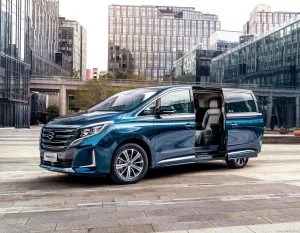women and cars
Celebrating Women In Motorsport

It wasn’t that long ago that we celebrated International Women’s Day. This got me thinking about the number of women involved in motorsport. Are there any at present? If so, who are they? After a little research, it was revealed that there are some amazing female stars.
It’s great to see that there are many women enjoying motorsport trackside as well as women competing in racing, and they are having loads of fun along the way. Women are actively involved in various roles as motor racing volunteers, as motor racing mechanics and engineers, and as racers; in fact, you name it, and there will be women involved.
My recent experience of watching motorsport live brought me to the South Island of New Zealand in early February 2024. Yep, it was cold, but watching motorcycle racing at Teretonga Park Raceway near Invercargill was a blast. I can highly recommend the Burt Munroe as a great way to enjoy all things with two wheels, meeting heaps of great people while doing so. Yes, the rain did play a role in the day’s proceedings, but there was still a full day’s racing enjoyed by all. Winning her race in the motorcycling NZ Supersport 300, Billee Fuller, showed the boys how it gets done, covering the distance with precision and lightning quick times in the damp conditions.
Very much a level playing field, motorsport does enable men and women to compete together. Back here in Australia, Brianna Barker races on the drag strip in her own AMC Rambler Hornet. She grew up in the drag racing scene and wanted to jump in and give it a go herself. She loves the sensation of going fast over the quarter mile in around 12 seconds or less.

Erebus Motorsport’s Betty Klimenko in Australian’s V8 Supercars has had a lot of racing success. Last year, she became the first female majority team owner to win the Supercars drivers’ and teams’ championship. This followed her team’s memorable Bathurst 1000 win in 2017.
Renee Gracie has been racing cars ever since 2013. Last year, Renee raced in the Fanatec GT World Challenge Australia series held at the 2023 Perth SuperSprint meet. Renee raced in an Audi R8 GT3 LMS Ultra car and finished top of the racing board. She was first in the GT Trophy Class, where in all of the 7 races that she contested she won.

Now on to something a little different. Not all of us have the talent to race a car over all types of road surfaces, but this is Molly Taylor’s playground. Molly has been racing in rally cars for quite some time, where she debuted proper in the Australian Rally Championship in 2007. She won the F16 class, a feat she repeated in 2008.
In 2016, Molly Taylor, with co-driver Bill Hayes, became the first female driver to win the Australian Rally Championship, also being the youngest driver to do so at the time.
Mid-2020, Molly joined the Extreme E international electric rally car series. The Extreme E racing series commenced in 2021, and since then she has partnered with Johan Kristoffersson with the Rosberg X Racing team. The pair won 3 of the 5 rounds of the season, on their way to becoming the overall series champions.
In 2022, Molly Taylor joined JBXE and raced in the 2022 Desert X-Prix series.
Even at last month’s Thrifty Bathurst 500, women made up 65 of the full-time staff working on the ground between V8 Supercars and the Supercars’ teams alone. Among the foremost women in the Australian Supercars is Romy Mayer, a key player in PremiAir Nulon Racing’s rapid ascent of the ladder. Romy is one of the sport’s leading race engineers.
Driving a car is most definitely not just a man’s game!
Choosing The Right Driving Posture
When I learned to drive, I wasn’t told much about correct driving posture apart from ensuring that my feet could reach the pedals (obviously) and that my hands were in the “ten past two” position*. However, as time went on and I drove more, I soon came to learn that there’s more to sitting comfortably, and there’s a reason why car manufacturers take so much trouble with designing seats and making them adjustable in many different ways.

If you’ve felt stiff and sore after driving for a long time, then your driving posture might have something do to with it. Sitting down in a car seat is no different from sitting down in an office chair from some perspectives, and it’s important to allow for regular breaks during a long drive so that you can stretch your legs, etc. – just like you would if you were at work. Your office chair is probably not as comfy and cushy as the driver’s seat, unless you’ve done what I’ve done and converted the seat from an old Ford Falcon into an office chair (it’s a pig to move in and out, though, as I haven’t put castors on it).
Although the idea would be to get up every 20 minutes, we all know that this isn’t always possible when driving (every hour is more like it). However, you can reduce the strain on your body – and it is strain – from holding in one position for ages by ensuring that you’re sitting correctly. If you’ve felt stiff after a long drive, then this might help you.
Everybody’s body is different, so I can’t give precise measurements and angles. You may have long legs in proportion to your body, a big bum or a long back. You may be a massive great big dude over six feet tall, or you may be a petite woman reaching five feet in her high heels. This means that what’s ideal for you probably won’t be idea for someone else. In fact, what’s best for you might not even be possible in some vehicles, so always test out the seats before you buy a new car. This means that in the case of a couple consisting of the big dude and the petite lady, you’ll need to compromise (not ideal) or even buy two cars.
OK, to make sure you’re sitting comfortably, let’s begin with some basics. Take your wallet and/or phone and anything else out of your back pocket, because that will have an effect. Now take time to find out what a neutral spine feels like. A neutral spine is not a straight back, as the human spine is supposed to have a nice gentle S-bend shape to it. Stand up and, if you can, check in a mirror side on. Ensure that your weight is evenly distributed on both feet and don’t fully lock your knees. Now imagine that there’s a string attached to the top of your head and that it’s pulling you up.
For more help with knowing what a nice neutral spine feels like, I suggest chatting to your friendly local physiotherapist, taking up Pilates or both.
Now to get into the car. Oddly, you need to start with the seat in completely the wrong position and then bring it into the right position. If you’re doing this for the first time in a new car (or a car that you’re considering buying) then move everything as far as it can go – seat angle, steering wheel and all. Push the seat right back as far as it can go. Now you’re ready to adjust it.
Let’s start with the seat height. In fact, the seat height is the least adjustable thing in many cars, so if you can’t get the height right, you may have to consider another vehicle. Your hips should be about as high as your knees or just a smidge lower (but not too low). However, you shouldn’t be so high that you hit your head on the top of the car or that you have to crane your head down to see the instrument panel. If you are too low down, you can use a cushion to get you high enough. Also check where the edge of the seat is relative to the backs of your knees. If the edge of the seat pushes into your knees, this will restrict your circulation, and riding in that car will be very uncomfortable. Seriously, this matters. I once owned a car that did this to me. It was great in other ways but the problem with circulation in the feet and legs was so bad that we sold the vehicle (hope it suited the new owner better). Reach down and see if you can fit two fingers between the edge of the seat and your knees. If you can, you’re all good.
Now bring the seat forward so you can reach the pedals (and the footrest) while keeping your back snugly against the seat. You should have a small bend in your legs, as locking your legs for long periods isn’t all that good for them. Your heels (in bare feet or ordinary shoes, not high heels) should be on the ground rather than dangling, and you should be able to push the pedal down with your heel on the floor as the fulcrum of a lever. It’s possible to buy pedal extenders so you can do this if the car is perfect in every other way. Of all the things that make driving tiring, an accelerator pedal that you can’t operate with your heel on the floor is the worst, and I’ve driven a couple.
If you can adjust the tilt of the seat, play around a bit until you find the position that gives you a neutral spine. Women will naturally have a more forward tilt than men thanks to the shape of the female pelvis (high heels were invented to exaggerate this) but not too extreme. Modern car seats have been designed to prevent “submarining”, which is when someone slides out under the seatbelt during the sudden stop in a crash, but this slightly backward angle isn’t all that good for our backs. There’s not much you can do about this, so get the tilt as close as you can to what gives you a neutral spine.
Now for the seat back. This should not be at right angles to the ground (straight up and down) but it shouldn’t be so far back that it forces you/allows you to slouch your chest, head and shoulders forward. Keep that spine in neutral position. If you have lumbar support, this should sit snugly into your lumbar lordosis (the curve in your lower back just above your pelvis). Some cars don’t have height-adjustable lumbar support (bad luck), and just have lumbar support that’s adjustable in terms of depth. If your car doesn’t have lumbar support or if it’s in the wrong place for your body (I have a long back in proportion to my legs, so this happens to me a lot), then a lumbar cushion is worth buying and fitting to your car.
Moving on up, make sure that your shoulders can press against the back of the chair, then adjust the head rest. The head rest is supposed to be a head rest, not a neck rest, so sit with a neutral spine and ensure that the head rest touches the back of your head.
Now to adjust the steering wheel. You should be able to get both hands on it with a slight bend in your elbows – driving with straight arms puts strain on your shoulders and neck. The best position isn’t “ten to two”, as I was taught, but quarter past nine (nine and three) down to seven and five. Adjust the height of the steering wheel to suit you.

In a perfect world, we’d be able to customize everything so that it suited our bodies perfectly, especially when it comes to female bodies. Traditionally, car seats have been designed to fit the average male, but manufacturers have seem to have woken up to the fact that half of the population has a female body and are factoring this into their seat designs and safety features (Mazda and Volvo, for example). That’s a topic for another day (and one I’ve discussed before) but in the meantime, if you aim to have a neutral spine and to keep a gentle bend in your arms and your legs while driving, you should be about right.
And don’t forget to allow for regular breaks to get up out of your seat during a longer journey.
Are You Being Misgendered By A Crash Test Dummy?

It may have come to your notice that not all car drivers are men. For most of us, this isn’t much of a staggering revelation, especially if you are a woman. Or if you were ever driven places by your mother. Or taught your daughter to drive. Or asked your wife or girlfriend to share the driving with you on a long-haul trip interstate. Or if… well, you get the picture. However, it seems as if car manufacturers, especially those responsible for the passive safety features, haven’t quite cottoned onto this yet, as a whole. You’d think that Bertha Benz had never taken her husband’s prototype horseless carriage out for a long drive to demonstrate to the world that this new invention was easy to use.
The road safety analysts who collect facts on these sorts of things found, when they separated out the data for men and the data for women, found out that women are 73% more likely to be injured in a vehicle crash than men and 17% more likely to die in one. This isn’t because they’re crashing at a higher rate, either. According to the Insurance Institute for Highway Safety in the US, men still crash more and are more likely to do silly things like not wear seatbelts, drive too fast and drive drunk. However, if they do get into identical crashes, a man is more likely to survive it than a woman.
One has to ask why, given that most car manufacturers pride themselves on how good their safety features are. After all, they do all those crash tests with dummies, don’t they? Surely these should make cars safer for both men and women?
Well, yes. Lots of passive safety features such as airbags have become standard on just about every new vehicle thanks to these tests. But there’s a wee problem with these tests, as pointed out by investigator and social commentator Caroline Criado-Perez in her book Invisible Women. Ms Criado-Perez dug around a bit and found out a few things about the standard crash test dummies used in most tests by most manufacturers. In these tests, they tend to use three main ones for the frontal crash tests: one 95th percentile male (in other words, a dummy representing a really big dude who’s bigger than 95% of other guys), a 50th percentile male (an average guy) and a 5th percentile female dummy (a teeny lady who’s shorter than 95% of the population). In other words, tests are carried out on twice as many male dummies as they are on female dummies. That’s a wee bit of a problem to begin with.
However, it gets worse. According to Ms Criado-Perez, during those frontal crash tests, the female dummy isn’t even tested in the driver’s seat – she goes into the front passenger seat. This makes you wonder what century these designers are living in. Surely, given that they’re putting all these electronic assistance gadgets, they know that this is the 21st century and that women drive cars, don’t they? The good news here is that in Australia, the ANCAP tests do put that 5th percentile female dummy in the driver’s seat during the frontal tests – good for them.
However, there’s one wee problem with that female dummy. OK, she’s smaller than the male ones and she’s got boobs, but when it comes to actual anatomy, that dummy doesn’t actually represent real female biology. What the designers did was to simply take the male dummy, scale it down and put boobs on it. The trouble is that nature doesn’t work like that. There are differences between male and female skeletons – that’s forensics 101 (yes, literally; it’s part of the basic undergraduate anatomy course). Take necks for example. If a man and a woman have the same sized head, the woman will have thinner neck vertebrae and a thinner neck. Now look down a bit to the other end of the spine, and look at the pelvis. The male pelvis is narrower and has a heap of different angles, which means that a guy’s legs are also straighter – and that’s just the start. The differences between male and female pelvises are as different as the soft bits found in and on the pelvis (yes, the bits you’re thinking of). And the list goes on: men have longer ribcages and denser long bones as well.
In short, using a smaller version of a male dummy doesn’t actually represent a female body. Women are being misgendered by crash test dummies, in effect.
Would you be surprised to learn that in one recent study on sex differences between injuries from car crashes, women were more likely to have injuries to their pelvises and spines – the places where female bodies are most different from male bodies? Those whiplash-protecting headrests do something, but they’re better at protecting male necks than female necks – because they’ve been tested on what are essentially male dummies.
However, this isn’t an excuse for men to hog the driver’s seat. Volvo is one car manufacturer who has cottoned onto the fact that women have been driving since Bertha Benz took a road trip through the Schwartzwald, and they’re starting to work out how they can make cars safer for 100% of drivers. What’s more, a more anthropomorphically correct female dummy has been invented, known as the THOR-5F. The THOR-5F isn’t just a scaled-down male dummy but has been built to actually represent that dainty 5th percentile female, pelvis, neck and all. This dummy even has a whole heap of sensors in the abdomen and the dummy looks like she’s in the second trimester of pregnancy. A crash test mummy, if you like. Here’s hoping that ANCAP and the other safety testing authorities will insist that this dummy or other dummies based on real women must be used in crash tests.
In the meantime, keep on driving safely and always wear your seatbelt (even if arranging it around your boobs is awkward).
It’s School Run Time Again!
Well, the start of another school year is upon us, which means that the roads at certain times of the day are going to be super-busy as mums and dads do the school run. If your child is starting school for the first time or if he/she is going to a new school that’s beyond walking distance, you might be wondering about doing the school run for the first time. What do you need to know? And how do you get your car ready for the school run?

First of all, figure out whether you want to be part of a car pool scheme or whether you’re only going to pick up and drop off your own kids. This depends on a number of factors, including how large your family is and where all the other families involved in the car pool scheme live. It also depends on how large your family vehicle is. If what’s handy for the school run is a smaller two-door hatchback that requires passengers to do a fair bit of clambering in order to be squished in the back seat, then you may not be all that popular. However, if you have a minivan or MPV handy, then you’re probably the obvious choice for doing the school run.
If you choose to go down the car pool route, then sit down and negotiate everything with the others involved in the scheme. What happens when someone is ill or has an unexpected meeting at an awkward time? If someone has to do the lion’s share of the driving (that person with the seven-seater, for example), how will they be compensated for the extra fuel (or power) costs? Will the car pool only be for the mornings, or will it be for afternoons as well – and what happens when one (or more) of the kids has after-school sports or drama or something along those lines? Carpooling, while good in theory, might not work for everybody in all situations.
Getting The Car Ready
Here, we’ll assume that your situation is like mine: two kids and no nearby families, so you’re doing the school run on your own. Do you need to do anything to get your car ready specifically for the school run?
Your car will already be set up in many ways for carrying your own kids (booster seats, for example) but there may be a few more things that you need to think about. For example, will you carry school bags in the boot or in the car cabin? What happens if someone has to carry an extra-big delicate school project – where will that go? How will you make sure that the inevitable paper notices that kids come out of school clutching at the end of the school day don’t get lost in all the other bits that creep into a car’s cabin over time (we’ve all been there!). If you have some sort of system, the chances that an important notice will get lost in the seat-back storage pocket or in the footwell will be minimised.
Other things you might want to get ready include:
- Having USB chargers ready to go in case someone needs to charge their phone, tablet or laptop – especially if they have only just realised that the laptop has low battery and they’re going to be the first person to present a speech when they get to school.
- Snacks for after school. Kids are often hungry after a busy day, and this can make them grumpy and whiny, especially if you end up getting stuck in a traffic jam. Dried fruit, nuts, rice crackers and bliss balls are all easy to store in the glove box to restore flagging blood sugar levels while still being reasonably healthy.
- An umbrella. Weather can be fickle, and if you opt to park further down the road then walk to meet your kids at the school gate, there will inevitably be a day when you didn’t think it was going to rain but…
Cleaning your car before the school year begins is your choice, although I’d recommend giving the inside a good vacuum just to give it that fresh, new feeling that you always get at the start of a new school year. If your kids are old enough to be embarrassed by a dirty car exterior, or if they’re old enough to find writing “Clean Me” messages in the dust funny, they’re old enough to be made to wash the car themselves. You could make going to the car wash a bit of a weekly ritual – perhaps at the end of the week.
School Run Etiquette
When you do the school run, it’s important to be courteous and considerate of other parents and other children. Don’t go all Mama Bear, ready to run roughshod all over other people in order to get your kids. Every other parent is as stressed and protective as you are. What’s more, congestion and visibility are real hazards around school gates at the busy times of day. To ensure that everybody stays safe, follow the etiquette rules:
- Don’t double-park, park in bus stops or park in No Parking zones. Parking a little way down the road and having a short walk won’t do you or your kids any harm.
- Keep your speed down, no matter how busy or rushed for time you are.
- Respect zebra crossings – that’s a no brainer.
- Don’t honk your horn to get your child’s attention.
- Avoid getting into silly status games with other parents involving fashion, achievements and vehicle type.
- Respect rules such as the time limit in the “kiss and run” zones.
- Model the sort of patience that you would expect your kids to demonstrate, especially regarding places in the queue, waiting your turn and so forth.
- If someone else breaks these rules, refrain from shouting corrections and comments out the window. You don’t want to be a Karen.

An MPV – Great for School Runs!